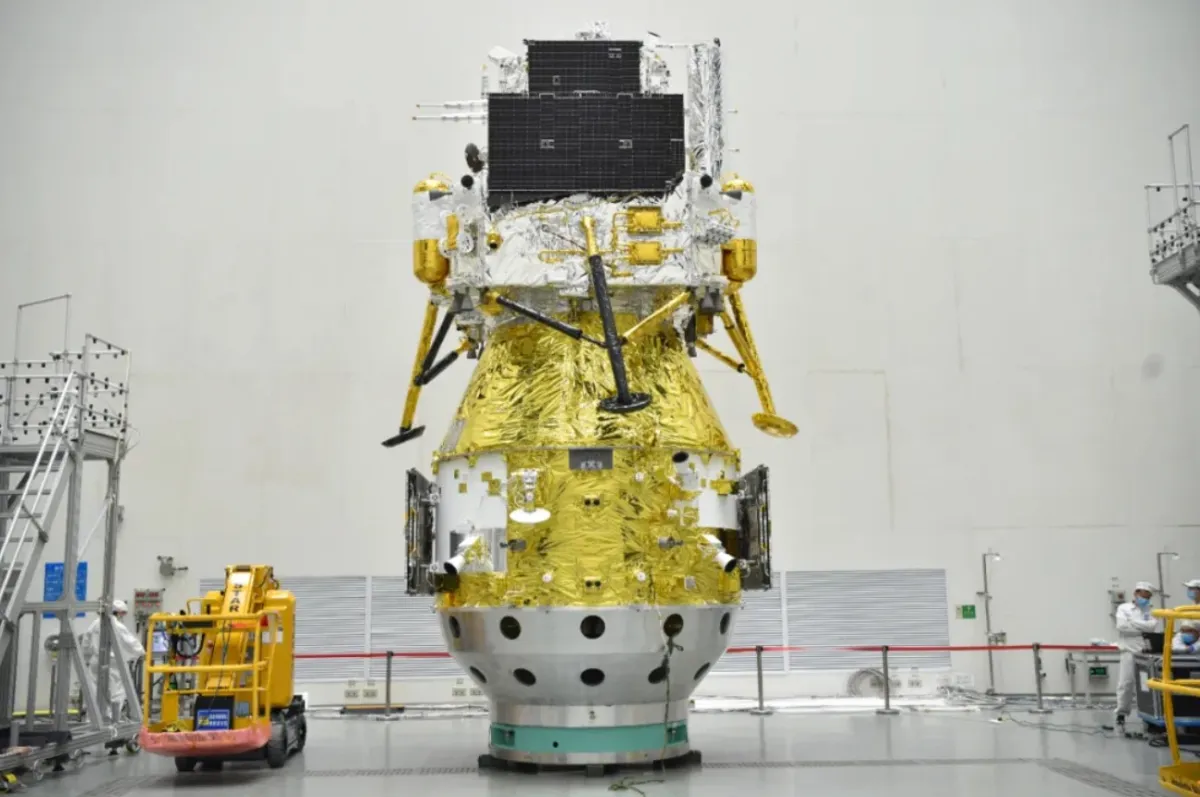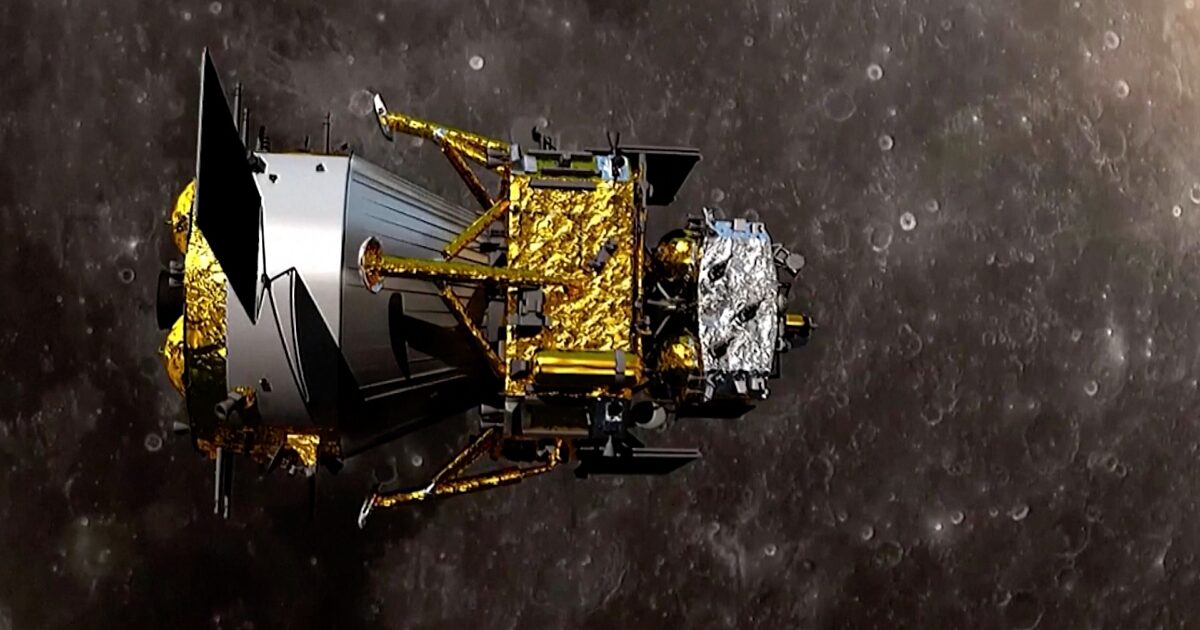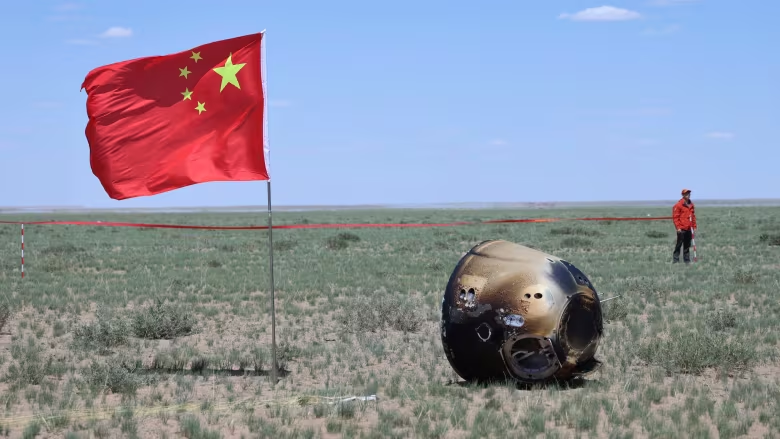WELL DONE CHINESE SPACE The Chang’e-6 mission dropped samples back to Earth after they were collected from the moon. For China’s rapid space travel progress, this is a big point, and it is very helpful for understanding the lunar composition and history. In this article, the Chang’e-6 mission is described in regards to its objectives, technological advances, scientific value from those who may study it in the future and what it could mean for further exploration of the Moon.
Chang’e-6 Mission: A Recap
Chang’e-6 is China’s sixth lunar probe mission and is one of many steps in its ambitious lunar exploration programme that is named after the Chinese moon goddess. Coming after China’s Chang’e-3, Change-4 and Chang’e-5 missions, which were successful in their objectives, the mission would see geological samples collected and brought back from areas on the far side of the moon that have yet to be explored.
The lander was accompanied by an ascent module launched on the Long March 5 rocket. The spacecraft orbited the moon after about four days in transit and then it touched-down to land on the lunar surface. The lander harvested samples with the help of a robotic arm and drill capable of collecting material from the moon’s surface and subsurface on Earth.

Chang’e-6 Mission Goals
Go deeper: What Chang’e-6 is meant to accomplish
Sample Return: The main aim was to bring samples from the surface of the far side of the moon down for insights into its composition and geologic past.
Technological Demonstration: The mission goals were to demonstrate advanced technologies intended for lunar exploration, precision landing/updating, mammoth specimen collection and safe return of a single human crew to Earth.
Scientific Research: They would allow for detailed scientific research on the moon’s formation, volcanic activity and potential resources.
International Cooperation: The mission itself was an opportunity for cooperation with international partners, facilitating the exchange of zeusslot scientific knowledge and encouraging worldwide cooperation in space research.
Technological Achievements
The Chang’e-6 mission demonstrated a host of technological prerequisites essential for the smooth execution of upcoming sorts of lunar and interplanetary missions:
An extremely precise landing approach to the far side of the moon had to be conducted due to lack of GPS, which necessitated processing data through sophisticated nav-computers in order to find a suitable spot for landing. NASA/JPL-CALTECH The lander’s autonomous guidance system allowed it to be placed safely on the surface of this alien environment.
Robot Sample Collection: A highly sophisticated robotic arm and drill capable of collecting samples from multiple depths. The system is important for reaching diverse layers of lunar material and collecting large samples.
Ascent and Return: A lander module with remains half way to the moon but developed by lander after completing a set of its own program, which included collecting a soil sample, lifting off from the lunar surface, and autonomously navigating to find and dock with orbiter. It was a tricky, finicky job that had to be precisely managed.
Re-entry and Recovery The return capsule, which held the lunar samples, made a successful re-entry into Earth’s atmosphere and the sample containers landed in a pre-planned recovery zone. During this phase, China showed that it could return precious scientific cargo safely.

Scientific Significance
Information gleaned from the Chang’e-6 sample(s), in turn, can offer researchers valuable insights into the moon’s composition, history, and potential resources:
Geology: When scientists examine the samples, they will be looking mainly at features that developed through geological processes on the lunar surface (e.g. volcanism, impact cratering).
Evolution of the Moon: These samples will demonstrate how the Moon changed over billions of years, what its early days were like for our interstellar buddy and how that odd crust formed.
Volatile Elements: The study of volatile elements in the samples will allow scientists to investigate how water and other volatiles are distributed and concentrated on surface of the sunlit moon, which is crucial for future lunar missions and human habitation.
Comparative Planetology – The Information garnered from the lunar samples will be used for comparative planetology to not only compare the Moon and Earth, but also other celestial bodies.
More Examples for Lunar Exploration
Summary : The success of the Chang’e-6 mission has serious ramifications for the future of lunar exploration and China’s place in the global sector.
Science Drivers of Mission: The scientific results resulting from the mission will help scientists to better understand the moon and pave the path for future lunar missions. The data will be used as well to help international scientific efforts to solve the mysteries of the moon.
Technological achievements of Chang’e-6: It shows China’s space exploring technology forging ahead. These capabilities will be necessary for more daring missions such as crewed lunar landings and interplanetary travel.
International Collaboration: The Chang’e-6 mission was developed through international cooperation and involved other space agencies such as the European Space Agency (ESA). This culture of collaboration contributes to the worldwide scientific community and fosters the exploration of outer space for peaceful purposes.
Encouraging Future Missions: In success of Chang’e-6 acts as an inspiration to the future lunar missions from anywhere, including China itself. We are reminded of the need to continue our investment in space exploration and the development of knowledge.
Challenges and Solutions
While Chang’e-6 was a success, the mission had to overcome several unique challenges:
Far Side Touchdown: Because of its rough terrain and line-of-sight issues with Earth, the far side of the moon offers some unique challenges. To solve this, the mission used the relay satellite Queqiao to communicate with Chang’e-4 from it and relay back that information down to mission control.
Collection & Preservation procedure: Vital for protecting the forensic integrity of the samples, every part of sample collection, storage and return to Earth required state-of-the-art engineering, comprehensive planning. The robotic systems and containment protocols for the mission were conceived to keep contamination low, help preserve the samples’ pristine state.
Control of Ascent for Reunion: The timing and close coordination required in launching successfully the ascent module from the lunar surface and in rendezvous with the lunar orbiter was splitting hairs between success and disaster. The feat was an example of “hard space engineering” by China, which has successfully carried out a combination of delicate maneuvers in orbit to complete complex space operations.

Future Prospects
Chang’e-6 mission would set the stage for more ambitious lunar exploration efforts
Chang’e-7 and onwards: China hopes to conduct more lunar exploration missions beyond Chang’e-6, including Chang’e-7 (for exploring the lunar south pole). The goal of these missions is to better explore and understand the lunar terrain, environment and resources.
Daily EnrollmentsCrewed Lunar Missions: Following the technological advancements taking place in Chang’e-6, China readies itself for its crewed lunar missions. The agencies said these missions will entail astronauts to the moon for exploration, science and to prepare for future lunar bases.
International Partnerships: China is also open to working with other countries in its lunar exploration program. Potential future missions may include collaboration with other space-acquiring nations, following the footsteps of sarcomas to wake evidence on a global stage in an international scientific program.
In an article about commercial lunar exploration, the success of Chang’e-6 is another proof of concept. Such companies might take part in future missions, possibly helping to support technology development and offering additional venues for lunar research.
Conclusion
This clearly shows a remarkable feat for the lunar expedition. With sample collection from the far side of the moon and return, the mission has offered critical scientific data essential for comprehensive investigation into composition, history and utilizable resource potential of lunar surface. The technological breakthroughs Chang’e-6 has demonstrated could pave the way for larger, more ambitious lunar missions, and underscore China’s increasingly sophisticated capabilities in space exploration.
The Chang’e-6 mission is a win-win not only for China but also the world’s space science, as the whole of mankind should celebrate this milestone together. The cooperative spirit of international collaboration and desire to expand the frontier of human knowledge will continue to lead us on missions to the Moon, and beyond, as we explore our universe. If you like reading this article then please consider reading our article about Sisimiut.

